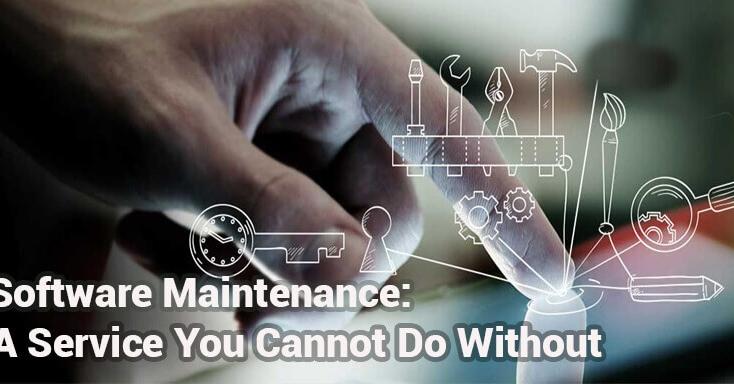In today’s digital age, businesses rely heavily on software to streamline operations, boost productivity, and deliver seamless customer experiences. From Enterprise Resource Planning (ERP) systems to Customer Relationship Management (CRM) software, these tools are critical in driving business growth and success. However, efficient software maintenance and support are indispensable to ensure that software continues to perform optimally and meet evolving needs.
Software Maintenance and Support
Software maintenance involves all the activities required to keep software in good working condition after it has been developed and deployed. It can be classified into four main types: corrective maintenance (fixing bugs), adaptive maintenance (accommodating changes in the environment), perfective maintenance (enhancing features), and preventive maintenance (avoiding potential issues).
On the other hand, software support refers to the assistance provided to users when they encounter problems or have questions about the software. By combining maintenance and support efforts, businesses can maintain the software’s stability, performance, and security while providing timely assistance to users.
Software maintenance and support services are essential for keeping business software running smoothly, secure, and up-to-date, ensuring optimal performance and minimizing downtime. These services encompass regular updates, bug fixes, and timely assistance to users, providing a seamless experience. By investing in proactive software maintenance and support, businesses can streamline operations, mitigate security risks, and stay competitive in a rapidly evolving digital landscape.
The Benefits of Proactive Software Maintenance
Taking a proactive approach to software maintenance yields several benefits for businesses:
- Regular maintenance ensures that the software operates smoothly, minimizing slowdowns and crashes, thus maximizing productivity and user satisfaction.
- Timely detection and resolution of issues help prevent prolonged system downtimes that can result in financial losses and damage a company’s reputation.
- Regular security updates and patches protect against potential vulnerabilities, safeguarding sensitive data and maintaining compliance with industry regulations.
- Well-maintained software offers a smooth, user-friendly experience, increasing customer loyalty and retention.
Software Updates and Upgrades
Software vendors frequently release updates and upgrades to improve functionality, fix bugs, and enhance security. Staying up-to-date with the latest versions is vital for a business to leverage new features and maintain compatibility with other systems. However, organizations must balance adopting the latest upgrades and ensuring system stability, as immediate adoption of new versions may introduce unforeseen issues.
Choosing the Right Software Support Provider
Selecting a reliable support provider is crucial to ensure a seamless maintenance experience. Businesses should consider factors such as the provider’s track record, expertise in handling similar software, responsiveness to support requests, and the availability of service level agreements (SLAs). Furthermore, the support provider should align with the company’s long-term goals, offering scalable solutions to accommodate future expansion and evolving needs.
Implementing an Efficient Software Maintenance Strategy
Developing a structured maintenance strategy is essential for effective software upkeep. This involves:
- Routine checks, updates, and backups should be performed as part of a schedule to prevent potential issues.
- Preparedness for critical failures or emergencies helps reduce downtime and allows for prompt resolution of issues.
- Keeping records of maintenance activities aids in identifying recurring issues and measuring the effectiveness of maintenance efforts.
Addressing Common Software Issues
Identifying and addressing common software issues is crucial to ensure seamless business operations. This may involve regular debugging, identifying performance bottlenecks, and applying patches promptly. Additionally, businesses can leverage customer feedback to identify areas for improvement and prioritize maintenance efforts.
Collaborative Approach to Software Maintenance
Software maintenance should be a collaborative effort involving stakeholders, development teams, and support personnel. Clear communication channels facilitate efficient issue resolution, while data-driven insights enable continuous improvement and refinement of the software.
Measuring the Impact of Software Maintenance
Defining Key Performance Indicators (KPIs) helps evaluate the effectiveness of software maintenance efforts. Metrics such as Mean Time To Resolution (MTTR), system uptime, customer satisfaction scores, and security incident counts offer valuable insights into the success of maintenance strategies and justify the Return On Investment (ROI) for maintenance activities.
The Future of Software Maintenance and Support
Looking ahead, software maintenance and software development services will continue evolving with technological advancements. Artificial intelligence and automation are expected to play a more significant role, offering predictive maintenance capabilities and faster issue resolution. Preparing for these changes and anticipating potential challenges will be crucial for businesses to remain competitive and efficient.
Conclusion
The role of software maintenance and support in streamlining business operations cannot be overstated. Proactive maintenance practices are vital for sustainable growth and success, from ensuring system performance to maximizing security and customer satisfaction. By adopting a collaborative and strategic approach to software maintenance, businesses can stay ahead of the curve and leverage technology to achieve their goals effectively.






